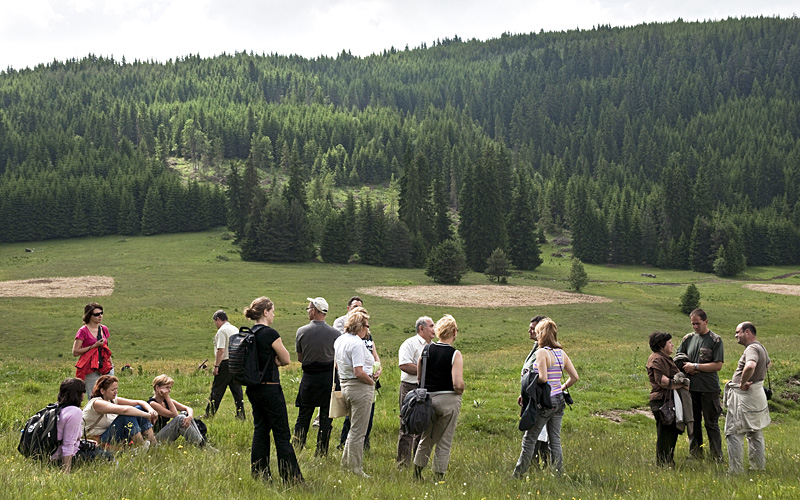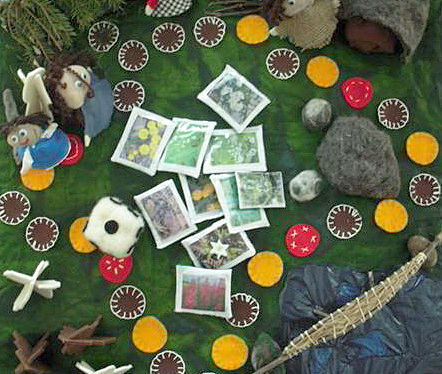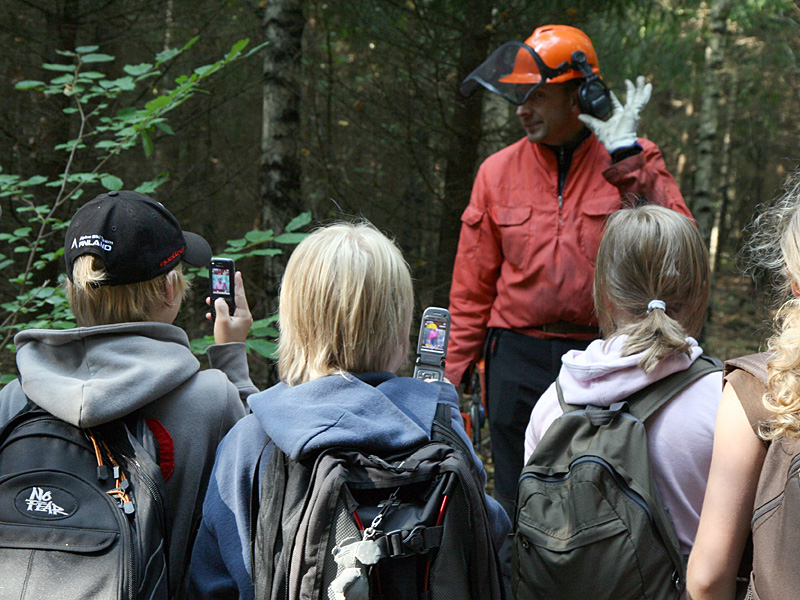You can teach anything using forests

A unique project at the University of Eastern Finland in the city of Savonlinna aims at making forests an integral part of teacher education.
In teacher education in Savonlinna, forests are considered a theme which can be used to teach any subject whatsoever.
The project aims at teaching students of education how to use forests and the examples provided by them in their own teaching.
One of the objectives is to transcend the boundaries between different subjects. Thus, soil acidity is studied in chemistry, and during their biology class the kids discuss how it affects vegetation.
”Forests are a natural choice for us as a theme. The Southern Savo region has a lot of forests, as well as plenty of forest know-how”, says Mr. Petteri Vanninen, project coordinator at the University of Eastern Finland.
The Savonlinna unit educates future home economics and crafts teachers, as well as kindergarten and primary school teachers.
Three approaches to forests

”Forests are approached in three different ways in teacher education: as content, methods and discussion on values,” says Ms. Sinikka Pöllänen, Professor of Craft Science at the University of Eastern Finland.
Content refers to increasing the students’ knowledge about forest matters. Methods refer to an attempt to break preconceived ideas about what and how one should teach. This is achieved by trips to forests, for example.
Method can also mean phenomenon-based teaching: while playing a game developed by crafts teachers, the pupils learn about everyman’s rights or silviculture methods. As to values, the starting point of a discussion about diversity could be that all trees in a forest are unique.
“The forest sector has had and still has an important role in society. A lot happens in the sector and it servers as a good example of how a sector and a business change as society changes,” Vanninen thinks.
All students at Savonlinna are taken to a forest trip to the Forest Museum Lusto and the Finnish Forest Research Institute’s forests in nearby Punkaharju at the beginning of their studies.
Learning ways to teach

According to Pöllänen, the students have responded positively to the forest theme. “Usually they’re confused and curious at first. Then thoughts and discussions begin to flow. This leads to discoveries,” Pöllänen says.
Discussion is a natural start for group work and sharing of expertise. This, and teaching that transcends subject boundaries are meant to provide the teachers with capabilities to meet the challenges they will face at schools.
“The pupils will have to be taught skills needed in life: creativity, self-expression, presentation, working, cooperation and problem-solving, as well as the skills of finding and evaluating information. They have to practise how to study,” Pöllänen says.
Even though Finnish pupils enjoy themselves at school better than before, a growing share of pupils do not find school a congenial place. Subjects that deal with issues important for the children’s own lives and new learning methods can help these children enjoy learning.
Export quality know-how at Savonlinna
The staff of teacher education at Savonlinna are so good at developing teaching methods that some of the prior results have been exported.
An example of this is the Case Forest learning method, which originated in a previous project carried out by Savonlinna, the Forest Museum Lusto and the Finnish Forest Research Institute afew years ago.
“The goal was to figure out how to make study visits to museums and events more interesting and to take into account the learners’ interests and previous knowledge,” says Ms. Suvi Pessala, Planner at the Finnish Forest Association and member of the project team.
To put it simply, the idea is that the pupils themselves select the issue or problem they will focus on, instead of the teacher providing the questions or tasks. The pupils decide themselves how to solve the problem and present the results. The role of the teacher is to direct and supervise the process.
An international team developing cooperation between schools and the forest sector heard about the method and decided to develop it further. The EU-funded project was joined in by eight countries.
The project resulted in the Case Forest method and materials, designed to help teachers in their work. The method is being taught to teachers all over Europe. Two courses will be organised in Finland this year, in the cities of Vantaa and Rovaniemi.
The Finnish Forest Foundation and the Ministry of Agriculture and Forestry have funded the development work at Savonlinna.
Case Forest –pedagogics towards sustainable development

Kirjoita kommentti